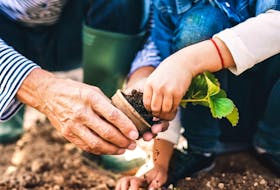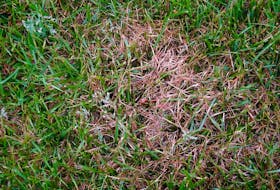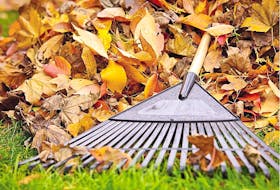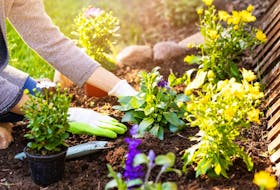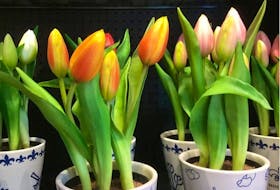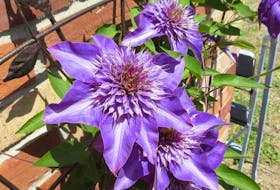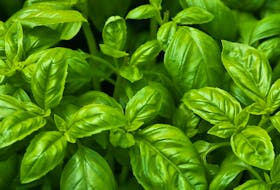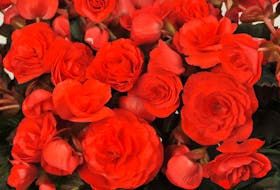As we all experience the impact of COVID-19 it seems that more and more of us are turning back to the basics.
One of those basics is gardening, and specifically growing our own produce. I am getting many questions about starting vegetable gardens, so this would be a good time to look at the basics of such a garden and what you need to do to get started.
During the Second World War many people started what came to be known as victory gardens, growing their own fruits, vegetables and herbs was a way of supplementing their rations, reducing pressure on the food chain, and just improving morale in general.
I don’t know about you, but I have found my garden to be my refuge during these trying times and now that the warmer weather has arrived my thoughts are turning to growing my own produce and fruits. It would seem that many of you are thinking the same way based on the questions I am receiving.
This return to the basics has come about for practical reasons, such as growing your own food, but also because of the extra time many of us have due to self-isolation. I am here to help you get your gardens growing and I apologize for any delay in answering your questions as my e-mail box is very full. I will get to your questions in time.
For now, here are the basics of vegetable gardening:
1) Start by knowing the location of your garden. To optimally grow produce you will need a site that has at least 6-8 hours of direct sunlight. Gardeners.com is an excellent website that offers help planning out your garden.
2) What is the condition of your soil? If, for example, it has a lot of clay in it you will need to add organic matter such as compost or well-rotted manure. Does it drain well? Drainage is important for healthy plants. If the drainage is poor compost and manure can help with this problem as well.
3) What do you want to grow? Make a list of vegetables that you and/or your family would like to eat. Then, take the time to research the choices you have made. I cannot stress enough how important it is to be fully informed about what you want to grow.
– Know when to plant to avoid late frosts.
– Know how long vegetables take to mature to be ready for harvest.
– Know what your plants need to grow. Do they need extra fertilizer? Do they need extra water during dry times of the year? Do they grow well in proximity with other plants?
– Know the tips and tricks to growing the vegetable successfully. You can find many of these in my past columns. The link is at the end of this column. For questions you have that you can’t find the answers to, please e-mail me.
4) How will you water? Will you use an automated drip irrigation system or will you water by hand? Are you prepared to spend the time watering on a regular basis, such as for your tomatoes? Tomatoes need lots of water during the formation of the fruit in order to avoid a problem called blossom end rot.
5) Plant some flowers close to the garden that pollinators will be attracted to. Pollinators are needed to pollinate your flowering vegetable plants such as tomatoes and zucchini.
6) Are you limited by space? If so, I highly recommend a book by Mel Bartholemew called All New Square Foot Gardening, 3rd Edition.
7) Are you living in a condo or apartment and feel you can’t grow vegetables because you only have a balcony? You’re wrong. You can grow vegetables in containers and grow them well.
Q: I have a large Nanking cherry bush in my yard that we planted almost 13 years ago. Each year it has produced a ton of fruit, filling one or two large stock pots per year. There were the occasional years when we didn’t get out to harvest before the birds stripped it clean. In any case, the bush has always been a high-yield fruiter until last year. While the bush looked just as healthy as ever (abundant leaves, no significant die-off, no indication of disease) there were no berries. Not one. I’ve done a bit of reading and the following issues seem to be most often mentioned.
Age: While I understand that new bushes can take a few years to get started, ours is 13 years old and has been producing fruit for most of those. The issue isn’t that it hasn’t started fruiting but rather that it has suddenly stopped.
Fertilizer run-off: While it is planted adjacent to our lawn, we don’t fertilize the lawn, so there’s no issue with fertilizer run-off. Nor do I ever fertilize the bush itself. It’s never seemed to need it so I’ve just left it alone.
Lawn encroachment: It isn’t embedded in the lawn but rather is in a dirt bed between the lawn and the fence, so it’s not being crowded out by the grass facing competition for water.
Pruning/disease: Last fall I did some limited pruning but nothing too drastic. This spring there were a few branches that had died over winter, so I cut those off. Besides that, nothing has changed.
Sufficient pollination: One of our neighbours has beehives and there are always lots of bees visiting our yard, so I don’t believe that a lack of available pollinators is the issue.
A: You listed every possible cause of the lack of fruiting except for perhaps one, and this one might be a bit of a stretch. It is possible that the blossoms got touched with a late spring frost that affected the fruit production. Frankly, this is the only possible cause that I thought of except for perhaps a need for some fertilizer. Perhaps the soil is getting a little tired and in need of a boost.
I know we have heard the phrase ‘we are all in this together’ far too much over the past few months but in the case of gardening we are all in this together. Good luck, and happy gardening!
Gerald Filipski is the author of Just Ask Jerry. E-mail your questions to [email protected] . To read previous columns, go to edmontonjournal.com/filipski
Copyright Postmedia Network Inc., 2020

